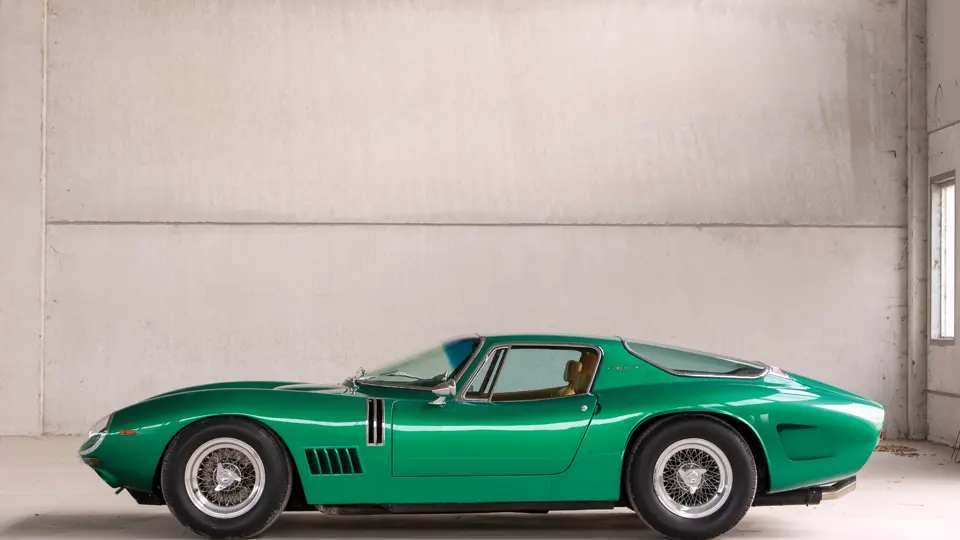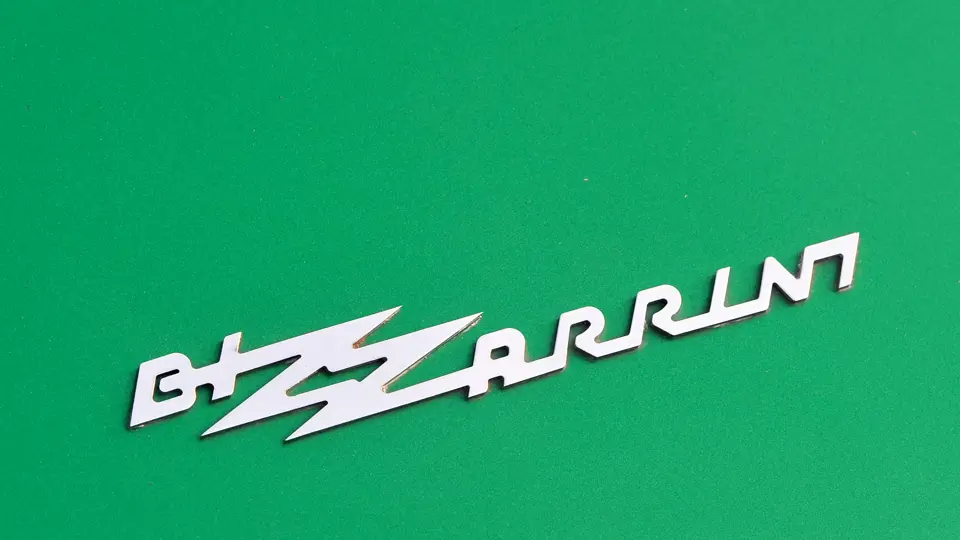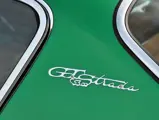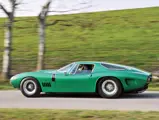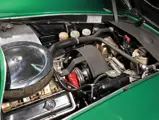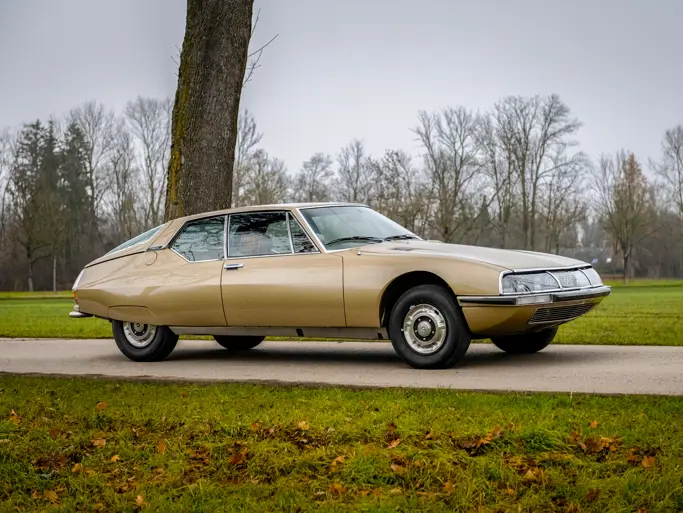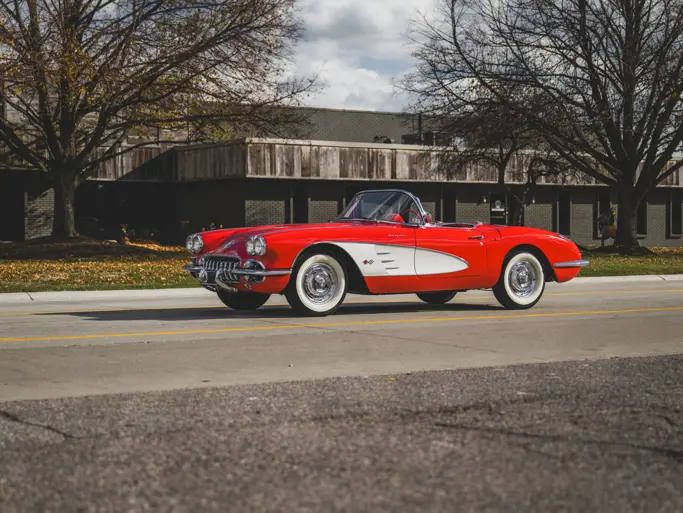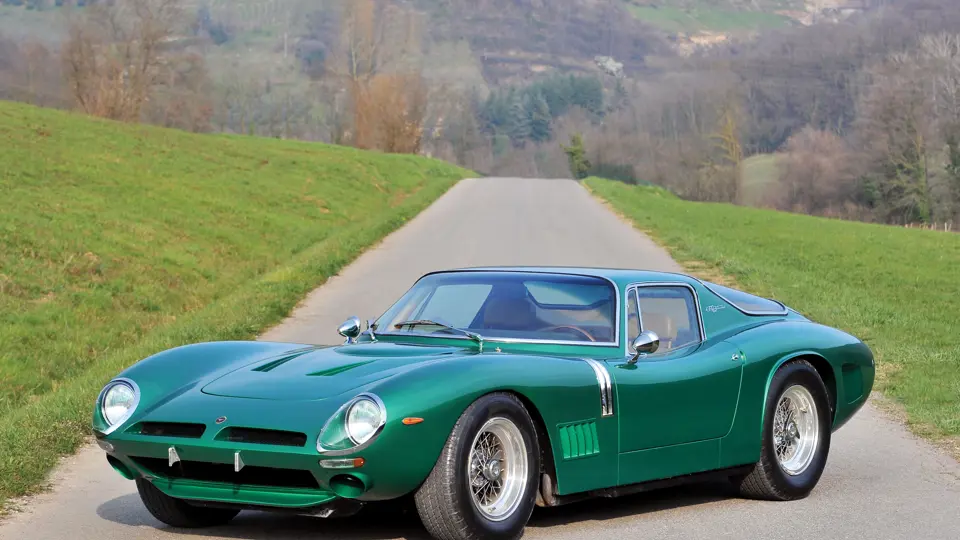
1968 Bizzarrini 5300 GT Strada Alloy
{{lr.item.text}}
€548,800 EUR | Sold
{{bidding.lot.reserveStatusFormatted}}
- Fully restored to concours standards
- Dramatic Italian styling coupled with American power
- Fascinating history and just three owners from new
- Alloy-bodied example
- Restauration complète au niveau concours
- Style italien spectaculaire et puissant moteur américainHistorique fascinant, et seulement trois propriétaires depuis l'origine
- Exemple carrosserie aluminium
355 bhp, 5,354 cc Chevrolet Corvette V-8 engine, single four-barrel carburettor, four-speed manual gearbox, independent front suspension, de Dion rear axle, and four-wheel hydraulic disc brakes. Wheelbase: 2,450 mm
Moteur V-8 Chevrolet Corvette, 5 354 cm3, 355 ch, un carburateur quatre corps, boîte manuelle quatre rapports, suspension avant indépendante, essieu arrière de Dion, freins hydrauliques à disques sur les quatre roues. Empattement: 2 450mm.
One of the most renowned automotive engineers of all time, Giotto Bizzarrini, made his mark on the automotive industry whilst employed by a handful of the industry’s most renowned companies. But perhaps his most interesting creations were the ones that bore his own name.
Upon his graduation from the University of Pisa in 1953, Bizzarrini found employment with Alfa Romeo and quickly rose through the ranks to work in the experimental department. The young Italian’s skills were definitely well revered, and his next opportunity came from Ferrari, where he was largely responsible for the development of many of what would become the company’s most iconic cars, including the 250 Testa Rossa, the 250 SWB, and the 250 GTO.
Whilst 1961 proved to be a very successful year for Ferrari in racing, tensions were rising inside the factory gates. A number of senior staff members that were vital to engineering and development, including Bizzarrini, walked out in frustration with the company and left “Il Commendatore” to fend for himself. In the long run, this would prove to work out quite well for the young engineer.
The defectors quickly formed ATS, with the intention of rivalling Ferrari, but Bizzarrini soon left the new organisation, electing to go it alone. Bizzarrini won a commission from Italian industrialist and Ferrari rival Ferruccio Lamborghini, for whom he designed the formidable and enduring Lamborghini V-12 engine. In addition, Count Volpi, of Scuderia Serenissima, selected Bizzarrini for the project that gave rise to the famous Piero Drogo-bodied Ferrari 250 GT SWB “Breadvan” derivative.
Bizzarrini was then involved with highly successful Milanese industrialist Renzo Rivolta, who desired to build a GT car of his own. Thus, he helped to develop the effective platform-type chassis for the Iso Rivolta GT prototype. Shortly thereafter, the Iso Grifo was introduced on a shortened Rivolta chassis. It proved to be a wonderful automobile, as it combined a race-inspired chassis with reliable Chevrolet power and was wrapped in beautiful Italian styling.
Convinced of the Grifo’s competition potential, Bizzarrini built his own version of the Grifo for racing, and it achieved great success, amazingly winning the GT class at Le Mans in 1964 and again in 1965. During this period, however, the working relationship between Rivolta and Bizzarrini grew increasingly conflicted, as Iso continued to build road going Grifos and Bizzarrini focused on racing. Since Bizzarrini had legally registered the Grifo name, a deal was ultimately struck to allow its use by Iso in exchange for enough parts to build a number of A3Cs, in both Strada road going form and Corsa variants for racing.
Whilst the dramatic Bertone-designed Strada was ostensibly a street car, its specifications read like those of an all-out competition car, as it had lightweight aluminium bodywork by BBM, of Modena, a fabricated platform chassis, and a semi-monocoque body riveted to the frame. Output of the front/mid-mounted 5.3-litre Chevrolet V-8 engine ranged between 355 and 400 horsepower, providing a claimed top speed that approached a staggering 180 mph. Despite its performance and due to Bizzarrini’s predilection for racing, very few examples of the road going 5300 GT Strada were ultimately produced during its six-year production run.
This particular alloy-bodied 5300 GT Strada was delivered new to Belgium, where it was purchased by Guy Arend, who resided in Durbuy. Arend worked in advertising for much of his life, but his passion was World War II history. At 16 years old, Arend was living in Bastogne during the Battle of the Bulge and witnessed some of the fighting in what would be the last major German offensive of World War II. Arend amassed one of the largest collections of World War II vehicles on the planet, and subsequently, in 1970, he founded the Victory Memorial Museum in Hondelange, Belgium, to honour the heroic actions of the Allied forces over the course of the Second World War.
In a period interview, Arend mentioned his Bizzarrini and commented that he decided to purchase the car because he was always travelling and needed a car that wouldn’t cause him any problems. He goes on to mention that he had a Chevrolet Corvette prior to the Bizzarrini and drove it for 350,000 kilometres without any problems. As the Bizzarrini combined the tried-and-true Chevrolet V-8 with Italian style and luxury, it was clearly an ideal car for a gentleman looking for an eye-catching grand tourer. Arend quickly fell in love with the car. The Bizzarrini undoubtedly served him well, as he would retain the car for an incredible 30 years, before it was purchased by its second owner in 1998.
Under the stewardship of the second owner, a Swiss-based collector, it was decided that the car would be fully restored. The 5300 GT was entrusted to specialists in Italy, who were run by Bizzarrini’s former factory manager, Salvatore Diomante, who is considered to be the most renowned expert in restoring Bizzarrinis, as Diomante was intimately connected with their construction. He performed a concours-quality restoration to its original specifications and refinished the car in a stunning combination of green over tan leather. Additionally, the owner requested that an air-conditioning system be retrofitted to the car, as well as a restyled rear grille and other minor modifications to suit his tastes; all of which can be easily restored to original specifications if so desired. In 2004, the car was shown at the Concorso d’Eleganza Villa d’Este, proving that the quality of the restoration was indeed up to international concours standards.
In 2011, the Bizzarrini was purchased by the current owner and has been maintained under the same standards of fastidious care. Presently, the car is in very good overall condition and showing few signs of road use. The interior has been recently refurbished and still feels very inviting, and it would surely be a pleasant place to be in for high-speed touring across Europe. Under its current ownership, an electric power-steering system was added to increase the drivability of this already capable Bizzarrini.
Whilst Giotto Bizzarrini can be credited with creating some of the world’s most incredible sport cars, none of these creations are more visually compelling and unique than the 5300 GT Strada. Bizzarrini said of it: “I started with the idea of the 250 GTO and set about trying to improve on it”.
This car, featuring gorgeous Italian bodywork with the heart of a powerful American V-8, offers a unique character and a commanding presence on the road. It proved to be a more than capable sports car in the hands of Guy Arend when new, and as it is complete with a FIVA Passport, it is ready for continued road use, rallies, or concours judging today.
Giotto Bizzarrini, un des ingénieurs automobiles les plus brillants de tous les temps, a apposé sa marque sur l'industrie automobile en travaillant pour certains des constructeurs les plus réputés. Mais ses créations les plus intéressantes sont peut-être celles qui portaient son propre nom.
Après avoir obtenu en 1953 son diplôme de l'Université de Pise, Bizzarrini trouvait un emploi chez Alfa Romeo et s'élevait rapidement dans la hiérarchie pour travailler au département des études. Les talents du jeune italien étaient manifestes, si bien qu'une occasion se présentait d'entrer chez Ferrari. Là, Bizzarrini a joué un rôle important dans le développement de modèles généralement considérés comme les plus emblématiques de la marque, comme la 250 Testa Rossa, la 250 châssis court et la 250 GTO.
Alors que la saison 1961 se révélait très favorable à Ferrari sur le plan de la compétition, des tensions se manifestaient derrière les murs de l'entreprise. Elles débouchaient sur le départ de plusieurs membres du personnel dirigeant, qui jouaient un rôle important dans le développement et la mise au point technique. Bizzarrini faisait partie de ce groupe qui, frustré par les relations avec « Il Commendatore », laissait ce dernier seul aux commandes. Au bout du compte, cette décision se révèlera plutôt positive pour le jeune ingénieur.
Les transfuges formaient rapidement la marque ATS, avec l'objectif de concurrencer Ferrari, mais Bizzarrini ne tardait guère à quitter cette nouvelle organisation, préférant prendre son indépendance. Il obtenait alors un contrat avec l'industriel italien Ferruccio Lamborghini, rival de Ferrari, pour qui il concevait le moteur V-12 de la marque, fantastique et endurant. Par ailleurs le comte Volpi, de la Scuderia Serenissima, faisait appel à Bizzarrini pour le projet qui allait déboucher sur la fameuse Ferrari 250 GT châssis court « Breadvan », carrossée par Drogo.
Bizzarrini collaborait ensuite avec Renzo Rivolta, brillant industriel milanais qui souhaitait produire sa propre voiture de Grand Tourisme. Ainsi, il participait à la conception de l'excellent châssis du prototype Iso Rivolta GT. Peu de temps après, l'Iso Grifo était dévoilée sur un châssis Rivolta raccourci. Cette voiture s'est révélée extrêmement réussie, car elle combinait un châssis inspiré de la compétition avec un moteur Chevrolet fiable, le tout habillé dans un style italien d'une grande élégance.
Convaincu du potentiel de la Grifo, Bizzarrini produisait alors sa propre version pour la compétition. Elle remportait un grand succès, décrochant même une victoire de catégorie aux 24 Heures du Mans 1964, puis à nouveau en 1965. Mais pendant cette période, les relations de travail entre Rivolta et Bizzarrini entraient dans une phase de conflit, Iso continuant à produire des Grifo de route et Bizzarrini se concentrant sur la compétition. Bizzarrini ayant déposé le nom Grifo, un accord était finalement trouvé pour permettre son utilisation par Iso, en échange d'un nombre de pièces suffisant pour que Bizzarrini puisse fabriquer plusieurs A3C, tant en version Strada de route qu'en version Corsa pour la compétition.
Alors que la Strada dessinée par Bertone était en principe une voiture de route, ses spécifications correspondaient plutôt à celles d'une machine de course : elle comportait une carrosserie en aluminium réalisée par BBM, de Modène, un châssis spécial et une structure semi-monocoque rivetée au châssis. La puissance du moteur V-8 Chevrolet 5,3 litres central/avant se situait entre 355 et 400 ch, ce qui permettait à la voiture d'atteindre l'étonnante vitesse de pointe de 290 km/h. Malgré ses performances et à cause de la prédilection de Bizzarrini pour la compétition, le nombre de 5300 GT Strada de route fabriquées pendant les six années de production est resté très limité.
La 5300 GT Strada à carrosserie aluminium présentée ici a été livrée neuve en Belgique, où elle a été achetée par Guy Arend, qui habitait à Durbuy. Pour la plus grande partie de sa carrière, Arend a travaillé dans le monde de la publicité, mais sa vraie passion était l'histoire de la seconde Guerre Mondiale. A 16 ans, Arend vivait à Bastogne pendant la Bataille des Ardennes et avait assisté à certains des combats correspondant aux derniers assauts majeurs des Allemands pendant cette guerre. Arend avait ensuite réuni une des collections les plus importantes de la planète sur le thème des véhicules de la seconde Guerre Mondiale, ce qui l'avait amené à ouvrir le Victory Memorial Museum à Hondelange, en Belgique, pour rendre hommage aux actions héroïques des forces Alliées pendant le conflit.
A l'époque, dans une interview, Arend a mentionné la Bizzarrini, précisant qu'il avait décidé de l'acheter car il voyageait beaucoup et avait besoin d'une voiture qui ne lui causerait pas de problèmes. Il poursuivait l'interview en indiquant qu'il avait utilisé une Corvette avant la Bizzarrini, et avait couvert 350 000 km sans aucun problème. Comme la Bizzarrini alliait le très éprouvé V-8 Chevrolet avec le style et le luxe italiens, il s'agissait clairement d'une voiture idéale pour un gentleman souhaitant une grande routière sortant de l'ordinaire. Arend n'a pas tardé à tomber amoureux de cette voiture. Et la Bizzarrini lui a bien rendu, puisqu'il la conservée pendant l'étonnante durée de 30 ans, avant qu'elle ne soit vendue à son deuxième propriétaire, en 1998.
Celui-ci, un collectionneur basé en Suisse, décidait de faire complètement restaurer la voiture. La 5300 GT était alors confiée à des spécialistes en Italie, gérés par l'ancien directeur de l'usine Bizzarrini, Salvatore Diomante, considéré comme les experts les plus renommés dans le rétablissement de Bizzarrini comme Diomante était intimement liée à leur construction. Il menait à bien une restauration de niveau concours, aux spécifications d'origine de la voiture, qui se présente aujourd'hui dans une combinaison spectaculaire de vert et de cuir beige. Par ailleurs, le propriétaire demandait la pose d'un système d'air conditionné, soit installé sur la voiture ainsi que la grille arrière redessiné avec d’autres modifications mineures en fonction de ses goûts, tout ce qui peut être facilement être retournés à la spécification originale si vous le souhaitez. En 2004, la voiture était présentée au Concorso d’Eleganza de Villa d’Este, prouvant ainsi que la qualité de la restauration était à la hauteur des standards des concours internationaux.
En 2011, la Bizzarrini était achetée par son actuel propriétaire, qui en a assuré l'entretien avec le même soin de tous les instants. Actuellement, la voiture est en excellent état et ne montre que des signes d'usure discrets. Récemment refait, l'intérieur reste très accueillant et constituera certainement un lieu idéal pour voyager à vive allure sur les routes d'Europe. Alors qu'elle était entre les mains de son actuel propriétaire, cette Bizzarrini a été équipée d'une direction assistée électrique, de façon à rendre son utilisation encore plus facile.
Alors que Giotto Bizzarrini peut être crédité de quelques-unes des voitures de sport les plus extraordinaires qui soient, aucune de ses créations n'est visuellement plus exceptionnelle et fascinante que la 5300 GT Strada. A son propos, Bizzarrini affirmait : « Je suis parti avec l'idée de la 250 GTO, et j'ai essayé de l'améliorer ».
Cette voiture, qui offre une superbe carrosserie italienne et un puissant V-8 américain, présente sur la route une personnalité unique et une autorité indiscutable. Quand elle était neuve, elle a prouvé entre les mains de Guy Arend qu'elle était une voiture de sport très performante. Aujourd'hui, équipée d'un passeport FIVA, elle est prête pour tout voyage, rallye ou concours d'élégance.




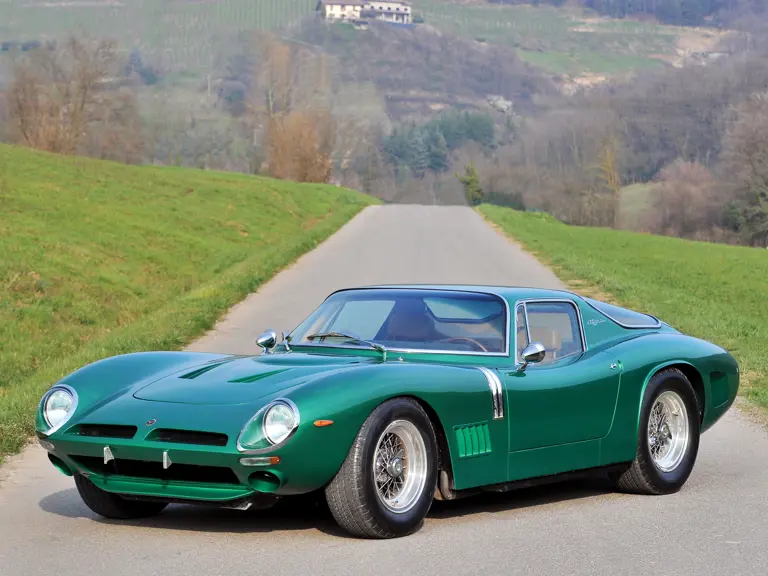


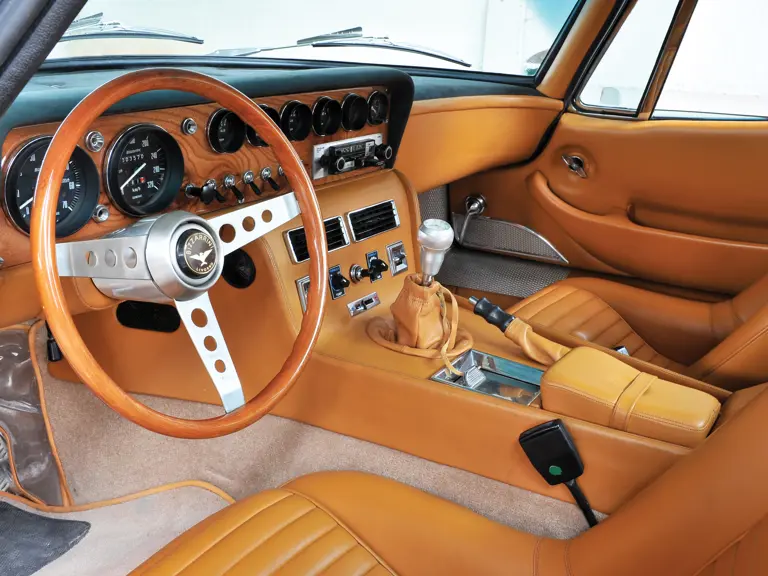

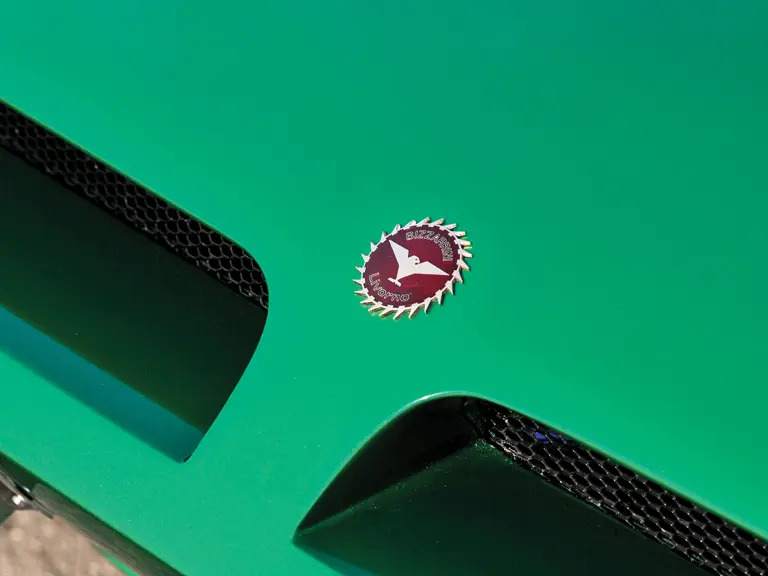
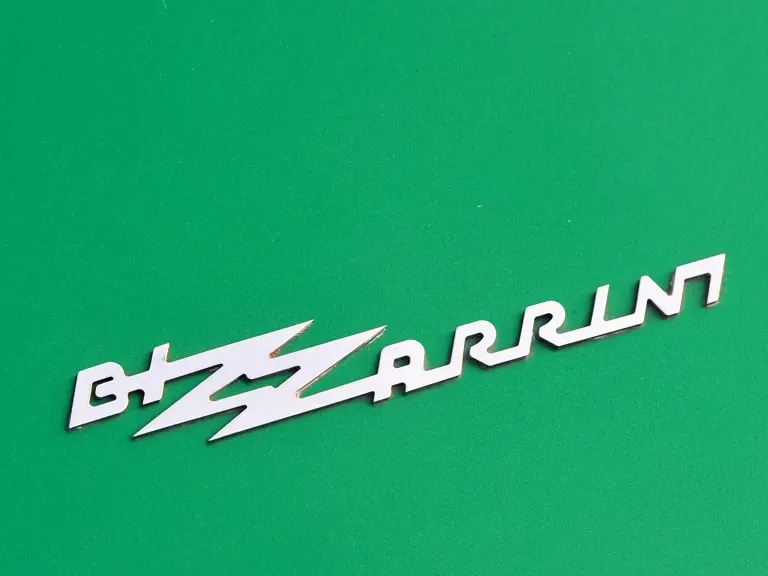
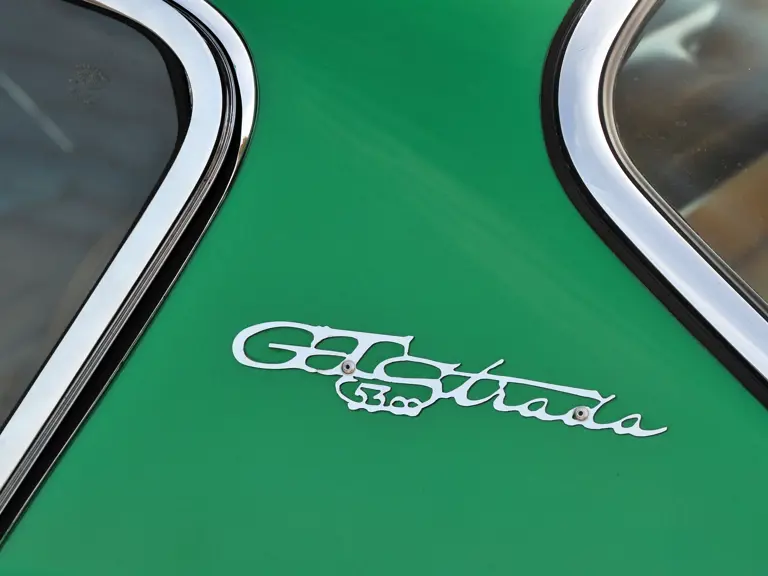
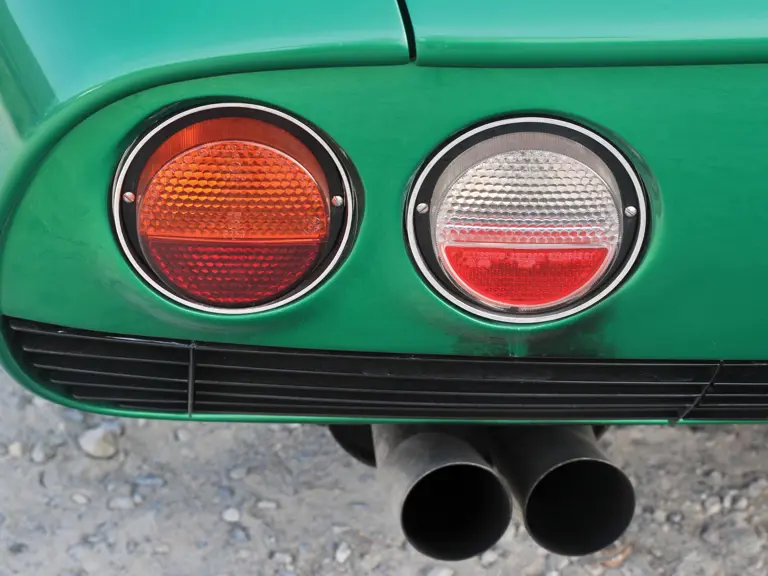
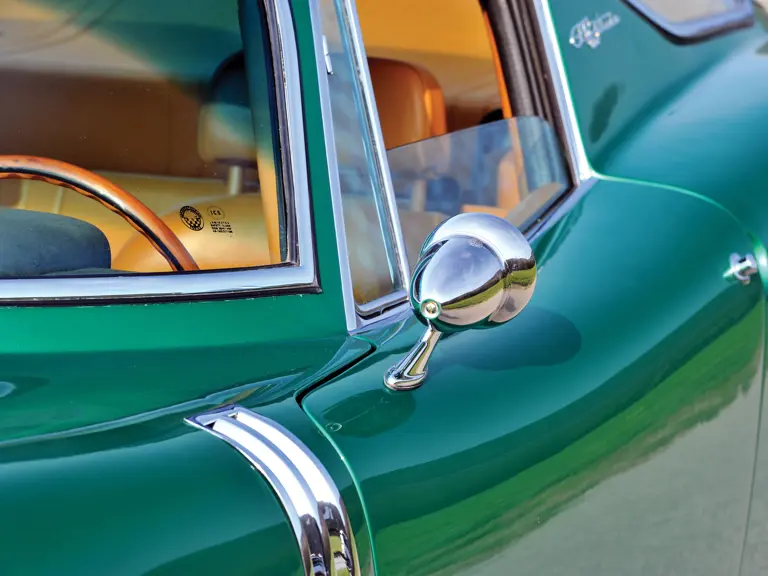

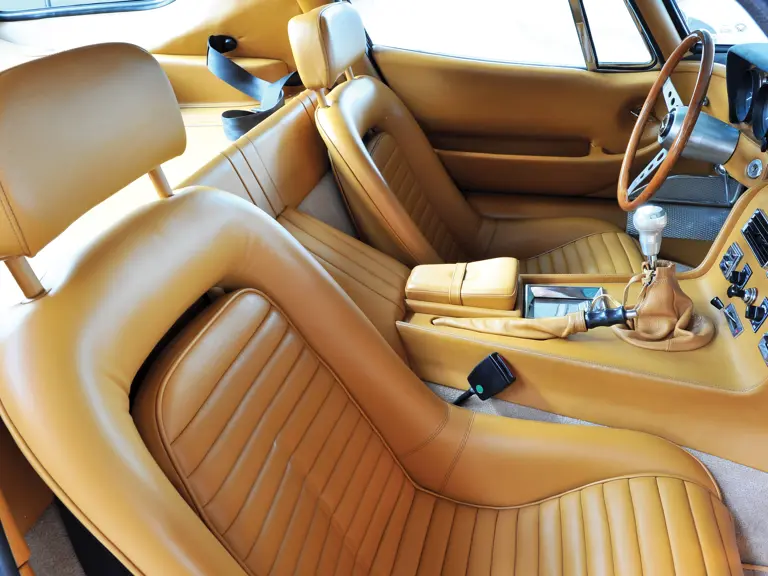
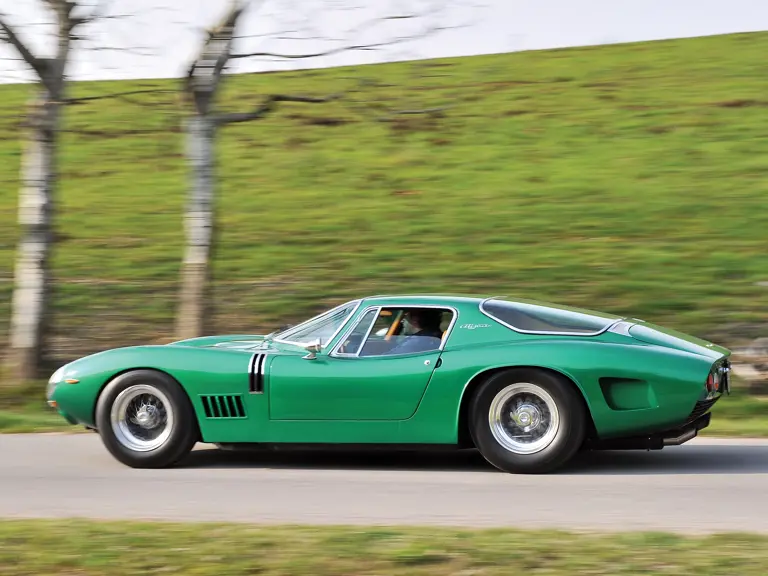



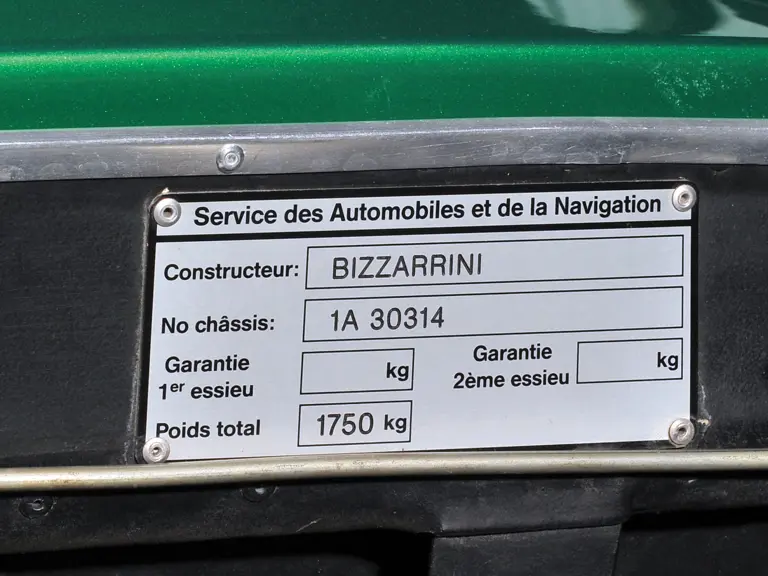

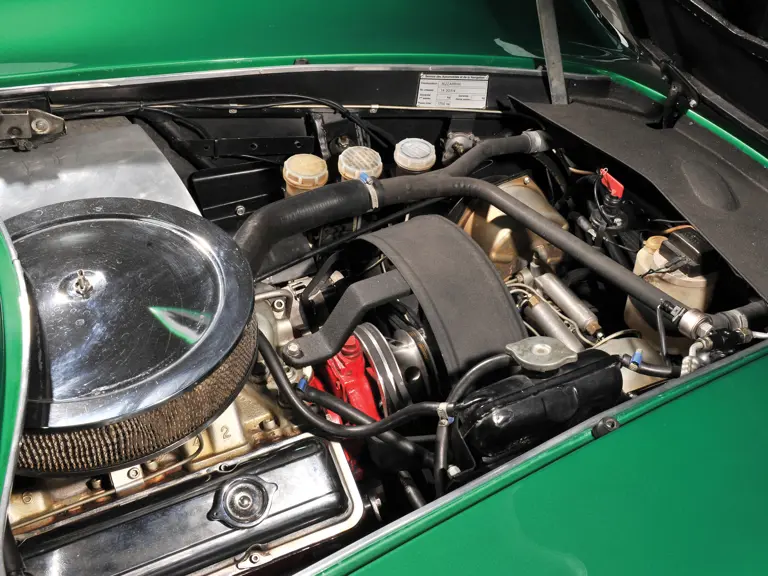
 | Monte Carlo, Monaco
| Monte Carlo, Monaco
